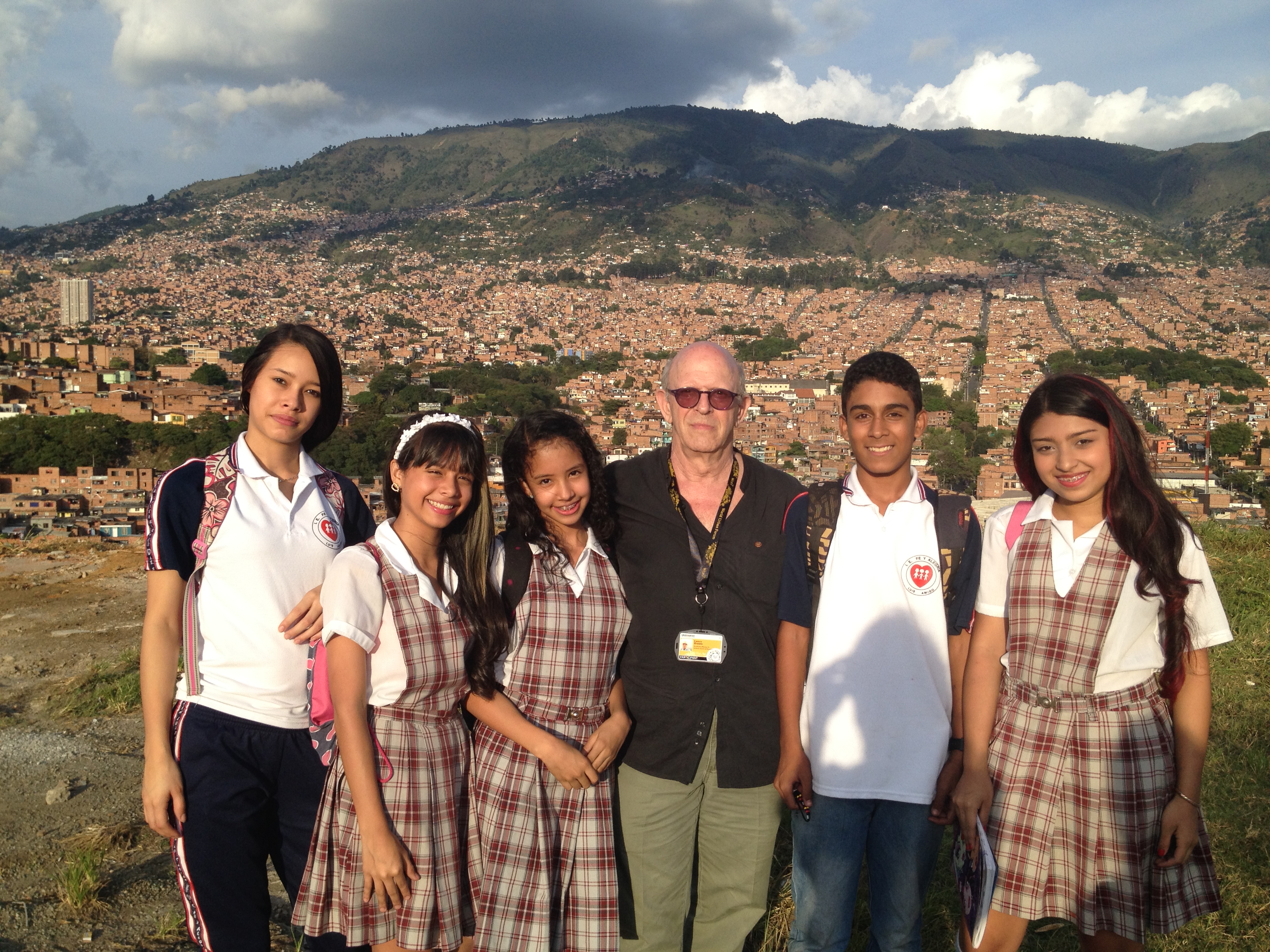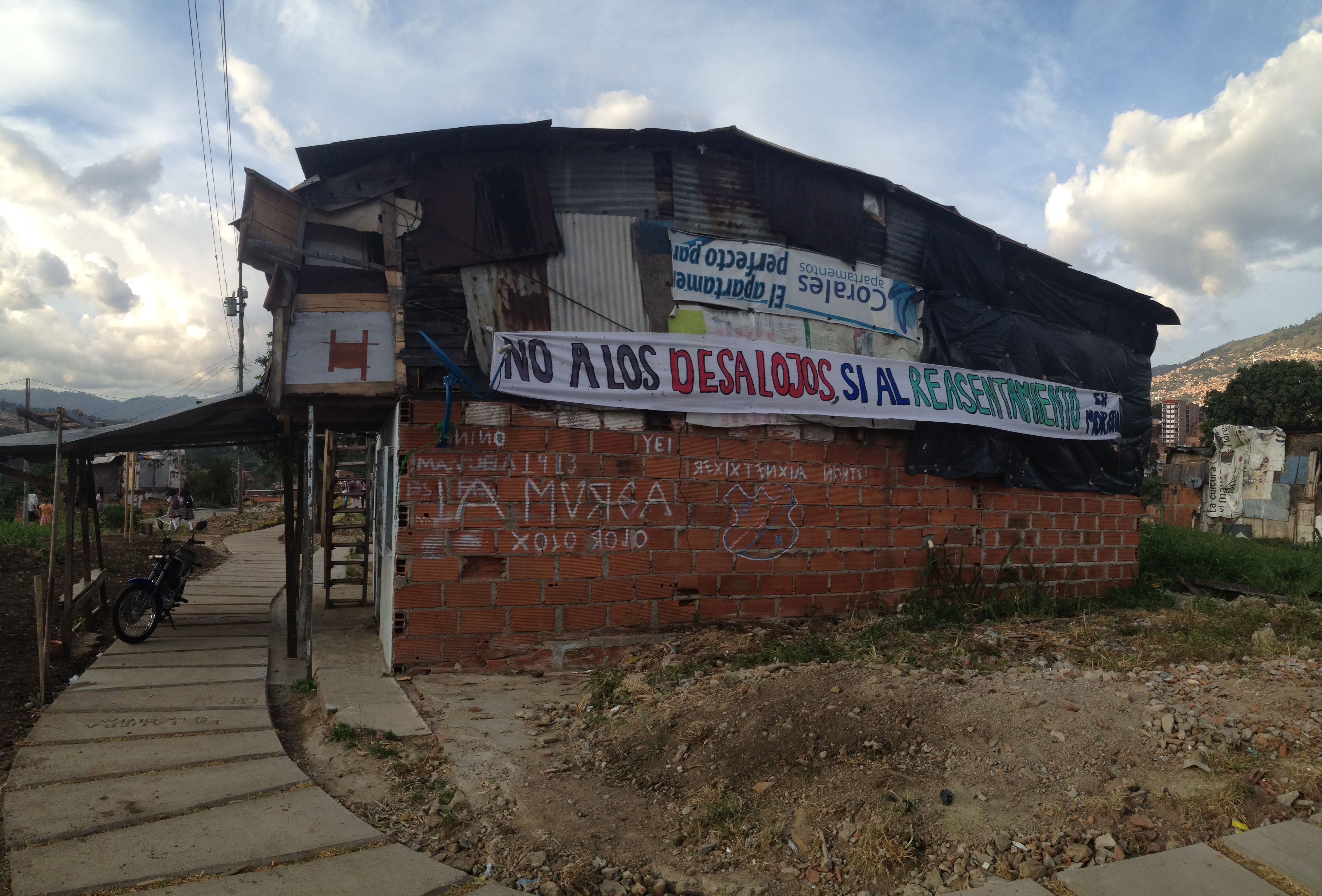by: Lance Jay Brown
Conversations with Dr. Joan Clos, the executive director of the United Nations Human Settlements Program (UN-Habitat), started and ended my visit to Medellín. I was presenting at the World Urban Forum 7 (WUF) with the Consortium for Sustainable Urbanization (CSU), an emerging non-governmental organization (NGO) that was formalized in 2008. CSU is co-chaired by James McCullar, FAIA, past AIANY president, and Aliye Celik; other board members include Margaret Castillo, FAIA, past AIANY president, and myself. The CSU partners with and is sponsored by the AIANY, NJIT, and CCNY/CUNY, among others. Detailed information can be found on its website at www.consortiumforsustainableurbanization.org, and information on the UN Habitat World Urban Forum can be found at wuf7.unhabitat.org.
”With sessions held every two years, the World Urban Forum examines rapid urbanization and its impact on communities, cities, economies, and policies. This year’s session of the Forum, with the theme ‘Urban Equity in Development – Cities for Life,’ drew more than 22,000 participants from more than 140 countries representing governments, UN agencies, NGOs, urban professionals, local authorities, and academics. The WUF, convened by UN-Habitat, is a non-legislative technical forum.” So starts the UN Summary of the WUF7 event. In large part, the activities were in service of formulating the agenda for HABITAT III, to be held in 2016, when the previous agenda from the last Habitat meeting in Istanbul 20 years ago will be assessed, and new goals will be set for our common global future.
In Medellín, with over 500 talks and events, including sessions with HUD’s Shaun Donovan, Hon. AIANY, and former NYC Mayor Michael Bloomberg, and an exciting and celebrated city to explore, there were not enough hours in the day to do it all. However, our CSU team participated in and visited as much as possible. Our own CSU event, “Smart Cities: How to make Cities Sustainable, Resilient and Equitable,” was organized in cooperation with UN-Habitat and the U.S. Department of Housing. It provided a forum for representatives from governments, NGOs, the private sector, industry, academia, financial institutions, and UN entities to discuss the challenges and opportunities in creating Smart Cities, which use technology to achieve social and economic goals. Particular emphasis was placed on economic sustainability as a fundamental building block of responsive, responsible, and equitable urban environments.
The event focused on the critical role of Information and Communication Technology (ICT) in fashioning Smart Cities. The term “Smart Cities” denotes enlightened city governance capable of deploying finite resources in a better, more responsive, more effective, and more interactive way for all its citizens. The development of Smart Cities with its attendant characteristics is of importance because cities, which now house more than half the world’s population, to a large extent determine the collective future of the global community. The ability of cities to adapt and reinvent their reasons for being in ever-changing circumstances will determine which cities will thrive and which will wither.
The panel focused on innovative approaches in four city regions: Belfast, Singapore, Rio de Janeiro, and New York. Presentations were made by Julian Goh, associate director, Centre for Livable Cities, Singapore; Washington Fajardo, Rio de Janeiro’s Mayor’s Special Advisor for Urban Issues; myself representing New York City (CSU), and Thomas G. Dallessio, director, Center for Resilient Design, New Jersey Institute of Technology (CSU); Belfast-based Sinclair Stockman, executive director, Digital Northern Ireland 2020, was prerecorded. The program which drew an impressive standing-room-only audience of more than 200 people was moderated by Urs Gauchat, dean of the College of Architecture & Design, New Jersey Institute of Technology (CSU), and introduced by James McCullar, FAIA, James McCullar Architecture, and CSU co-chair. While the PlaNYC and Rio presentations were excellent, the Belfast and Singapore presentations set the bar for what can be accomplished using cutting-edge data collection and analysis to both manage current operations and forecast future trends. All of the presentations will be available online at the CSU website.
In addition to the CSU program, I also participated in the Van Alen Institute’s program that asked and answered the question: “How can we reimagine our every-day urban context through robust and creative new ideas that address human, economic, and ecological resources, as well as the needs of communities? A design competition can be a highly effective tool to help your government agency, community, or corporation.” In “What Design Competitions Can Do for Your City,” the Van Alen Institute brought together government officials, academics, practicing designers, competition experts, and developers. Presentations and discussions addressed how to organize successful competitions, how to get buy-in from communities and political stakeholders, how to generate implementable designs, how to select and compensate the best design teams, and how to implement ideas while staying true to the original vision.
This program was moderated by David van der Leer, executive director, Van Alen Institute, and speakers included Trupti Amritwar Vaitla, CEO, Mumbai Environmental and Social Network; myself from New York; Teddy Cruz, architect and professor in Public Culture and Urbanism and director of the Center for Urban Ecologies at the Visual Arts Department, University of California, San Diego; Thomas G. Dallessio, AICP/PP, director, Center for Resilient Design, New Jersey Institute of Technology, Newark; Jessica Healy, Rockefeller Group Development Corp., NYC; and Jeffrey C. Shumaker, acting chief urban designer, NYC Department of City Planning.
My role was to establish the history of design competitions, with a focus on ideas competitions, over the past 30 years. While each presentation was of high value, the contrast between the positions of Jessica Healy and Teddy Cruz motivated me to suggest that a full-day symposium on the subject be developed to both compare and contrast their positions, corporate vs. creative populist, and to develop innovative mechanisms to expand the value of competitions in general.
Medellín, known as the City of Eternal Spring, is a city well worth visiting. The people are wonderful, open, and friendly, the food is delicious, and the weather is perfect. The advances in transportation are enviable, from the metro and the metro cable, to the outdoor escalators. The celebrated new cultural center libraries, 23 in all, I believe, are inspiring, as are the many new urban public open spaces that surround them all. The cable car through the national park is unforgettable as is most of the visit.
My visit, in part a mission to see the site of a former student’s thesis project, the Casa de Memoria for the community of Moravia, was dramatic. The mounded waste mountain of Moravia, the morro, is in the process of being transformed into a park. However, not all the slum dwellings are gone and some residents still protest plans for their future. While the WUF7 was an unmitigated success, there was also a manifestation in the center of the city by unsatisfied Colombians from around the country, the “Congreso de los Pueblos,” calling for better housing, health care, and work opportunities. This demonstration did not make the news.
My first Medellín encounter with Dr. Clos was at JFK Airport. He described the unique economic stratification of Medellín into six levels (one being the poorest, six the wealthiest), and how these stratifications also define the sharply separated neighborhood and community structures of the city. At our last meeting, a Special Session at the UN Forum itself, he called for cities less gated, more diverse, and with mixed-income communities. As written in the WUF7 Summary, he “encouraged the adoption of an urban planning approach that plans for everyone and focuses on urbanization, zoning, and building.” Noting that urban planning is more than master planning, he urged urban planners to “defend access to public spaces, facilitate interconnected cities, and support affordability,” and he called for the “end of words and the beginning of action in the face of climate change.” It will be interesting to see how cities like Medellín, countries like Colombia, and the world in general, often in contrast to many of these goals, respond.














